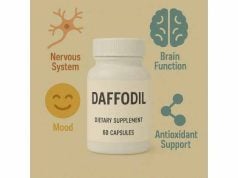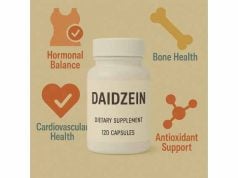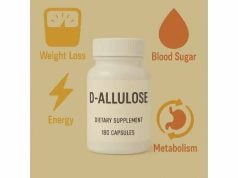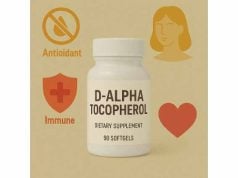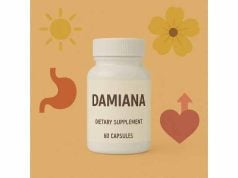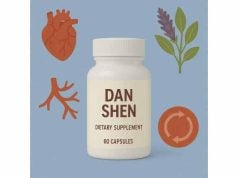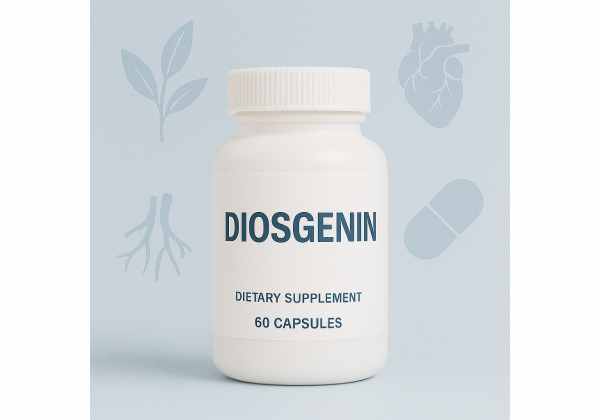
Diosgenin is a naturally occurring steroidal sapogenin found in several plants—most famously in wild yam (Dioscorea species) and fenugreek. In the lab, it has long served as a raw material for synthesizing steroid hormones. In the body, however, diosgenin acts differently: it does not convert into progesterone or estrogen, and its potential benefits come from separate biological effects. Early human research and extensive preclinical data suggest possible support for healthy cholesterol handling, metabolic balance, and cognitive performance, though evidence in people is still limited. This guide cuts through common myths, summarizes the best-available science, and offers practical pointers on forms, dosing, safety, and real-world use so you can decide whether diosgenin fits your goals.
Quick Diosgenin Highlights
- May support healthy lipid metabolism and cholesterol handling; human data remain limited.
- A small randomized trial found improved cognitive test scores with a diosgenin-rich yam extract.
- Practical range: 8–20 mg/day of diosgenin from a standardized extract; no established clinical dose.
- Safety caveat: evidence in pregnancy or breastfeeding is lacking—avoid unless prescribed.
- Who should avoid: people with hormone-sensitive conditions or on complex medication regimens should discuss risks with a clinician first.
Table of Contents
- What is diosgenin and how does it work?
- Proven and potential benefits
- How to use diosgenin day to day
- How much diosgenin per day?
- Side effects, interactions, and who should avoid it
- Evidence check: what studies show
What is diosgenin and how does it work?
Diosgenin is a plant-derived steroidal sapogenin—a chemical “backbone” found in species such as Dioscorea (wild yam), Trigonella foenum-graecum (fenugreek), and others. It became famous in pharmaceutical history because chemists learned how to convert it into human steroid drugs (like progesterone and certain corticosteroids) in industrial settings. That lab process does not occur in the human body; your digestive tract does not turn diosgenin into progesterone or estrogen. This distinction matters for expectations and safety.
Instead, diosgenin’s interest as a supplement comes from separate biological actions observed in cell, animal, and limited human studies. Several non-hormonal mechanisms have been proposed:
- Cholesterol absorption and transport: Diosgenin may influence intestinal handling of cholesterol. In preclinical models, it down-regulates NPC1L1 (a key transporter involved in cholesterol uptake) and appears to increase fecal sterol excretion. In broader lipid metabolism, it has been associated with effects on reverse cholesterol transport pathways and bile acid dynamics.
- Lipid biosynthesis signaling: Laboratory studies suggest diosgenin can modulate transcriptional regulators (e.g., SREBP-1c) and enzymes (e.g., HMG-CoA reductase), mechanisms that collectively affect triglyceride and cholesterol synthesis.
- Anti-inflammatory and antioxidant effects: Across multiple models, diosgenin has shown the ability to dampen inflammatory signaling and oxidative stress markers, mechanisms relevant to vascular and metabolic health.
- Neurobiological effects: In animal experiments and a small clinical trial of healthy adults, diosgenin-rich yam extract has been linked to changes in cognitive testing, with formulation and fat-based carriers influencing absorption and distribution.
From a practical standpoint, the form you choose matters. “Yam extract” products vary widely in standardization: some specify the percent of diosgenin in each capsule, while others list extract mass without clarifying the actual diosgenin content. Because the research tracks milligrams of diosgenin, not just milligrams of plant powder, label clarity is essential. Softgel delivery with oils may enhance uptake, mirroring how research capsules were prepared.
It’s also helpful to separate industrial use from supplement use. In industry, diosgenin is a feedstock for synthesizing hormones. In supplements, it is taken for its own biological profile—not to “replace” hormones. Keeping these roles distinct helps avoid common marketing claims that do not match physiology.
Finally, diosgenin is not a universal solution. While the mechanistic data are intriguing, human trials are few, heterogeneous, and small. If you decide to try it, frame expectations modestly, emphasize product quality and transparency, and monitor how you respond over several weeks.
Proven and potential benefits
When assessing diosgenin, think in tiers: established in humans, promising but preliminary in humans, and supportive mechanistic or animal data. Today, most claims land in the latter two tiers.
Cognitive performance (preliminary human evidence). A small, placebo-controlled, randomized, double-blind crossover trial in healthy adults reported improvements in a composite cognitive score after 12 weeks of a diosgenin-rich yam extract. The study standardized intake to a known diosgenin amount and used oil-based softgels to aid bioavailability. While encouraging, this single study was short, involved a modest sample, and focused on healthy volunteers rather than people with clinical impairment. That limits generalization. If cognitive support is your main goal, consider diosgenin as an experimental adjunct, not as a stand-alone therapy.
Cholesterol handling and metabolic markers (strong mechanistic support; limited human data). Across cell and animal models, diosgenin has demonstrated effects consistent with healthier lipid profiles: reduced intestinal cholesterol absorption, enhanced fecal sterol excretion, modulation of bile acid pathways, and adjustments in lipid synthesis transcription factors. These mechanisms conceptually complement lifestyle strategies and, in theory, could pair with diet changes or certain medications. However, robust human trials confirming meaningful changes in LDL-C, HDL-C, or cardiovascular outcomes are not yet available. If lipid health is your focus, maintain first-line medical and dietary strategies; treat diosgenin as investigational.
Inflammation and oxidative stress (preclinical). Studies in rodents and cell lines show diosgenin can depress pro-inflammatory signaling and oxidative stress markers, potentially relevant to vascular, hepatic, and metabolic health. Translating these effects to clear clinical benefits requires well-designed human research.
Other areas under study (preclinical). Investigations extend into glycemic control, liver fat, and tissue-specific signaling pathways. Some animal models show improvements in insulin sensitivity or fatty liver histology. These findings guide hypotheses but do not substitute for clinical outcomes.
What this means for you. If you’re generally healthy and curious, diosgenin may be reasonable to test for cognitive performance or metabolic “tune-ups,” provided you set modest expectations, choose a standardized extract, and track metrics that matter to you (e.g., repeatable cognitive tasks, fasting lipids under your clinician’s supervision). If you have active medical conditions, prioritize evidence-based therapies first and involve your healthcare team before adding diosgenin.
Overall, diosgenin’s evidence profile is promising but not definitive. Mechanistic and animal research are strong; early human signals exist (especially in cognition) but need replication and larger, longer trials across diverse populations and health states.
How to use diosgenin day to day
Choose a transparent product. Look for labels that specify actual diosgenin content per serving (e.g., “diosgenin 8 mg per softgel”) rather than only the weight of “yam extract” or raw herb. If a bottle lists “standardized to X% diosgenin,” you can calculate content: a 350 mg capsule standardized to 20% provides 70 mg diosgenin. That clarity lets you align intake with research-informed ranges.
Delivery matters. In the human trial and supporting animal work, diosgenin-containing capsules were formulated with oils. Taking diosgenin with a meal that includes fat or choosing oil-based softgels may support absorption and brain distribution. If you use a powder capsule, consider pairing it with a meal that includes olive oil, avocado, nuts, eggs, or similar fats.
Pairing and stacking. Diosgenin targets intestinal and hepatic lipid pathways that overlap with diet, fiber, and phytosterols. Practical, food-first pairings include:
- Soluble fiber (e.g., oats, psyllium) to trap bile acids and promote fecal sterol excretion.
- Plant sterols/stanols to compete with cholesterol absorption (if your clinician approves).
- Dietary pattern emphasizing whole foods and healthy fats, which independently improve lipid profiles.
Avoid combining diosgenin with new intensities of multiple supplements all at once. Make one change at a time and re-check labs to see what’s actually helping.
Timing. Once daily with the largest meal is simple and mirrors trial designs (12-week use with monitoring). If you split doses, take both with food that includes some fat.
Tracking response. For cognition, pick repeatable tasks: learning word lists, timed attention apps, or paper-and-pencil tests at fixed times of day. For lipids, test fasting labs (total cholesterol, LDL-C, HDL-C, triglycerides) with your clinician. If you don’t see meaningful changes after 8–12 weeks—and you’ve optimized diet, sleep, and exercise—it may not be worth continuing.
When to stop or hold. If you become pregnant, are trying to conceive, or are breastfeeding, pause diosgenin until you’ve discussed it with your clinician. If you develop new abdominal pain, dark urine, yellowing of the skin/eyes, unusual bruising, or persistent GI distress, discontinue and seek medical advice. While serious side effects are not commonly reported in people at typical supplemental intakes, careful monitoring is prudent.
Set expectations. Diosgenin is not a hormone therapy, and it is not a replacement for your clinician’s treatment plan. Approach it as a potentially useful adjunct for select goals, with patient, objective tracking.
How much diosgenin per day?
There is no universally accepted clinical dose of diosgenin. Human data are limited, and products vary widely in standardization. Here’s how to navigate dosing responsibly:
What research has used. A randomized, placebo-controlled, double-blind crossover trial in healthy adults used an oil-based yam extract standardized to 8 mg of diosgenin per day for 12 weeks. Cognitive test scores improved versus placebo, and no adverse effects were reported. While this is a single study, it gives a starting reference for standardized intake.
What you’ll see on labels. Commercial diosgenin-rich yam extracts often market higher intakes than used in that study. Some brands supply 20–50 mg diosgenin per day based on their standardization. Because formal dose-finding trials are lacking, more is not necessarily better. The safest strategy is to begin within or just above the research-anchored intake.
A practical framework.
- Start: 8–10 mg/day diosgenin from a standardized extract for 2–4 weeks, taken with a fat-containing meal.
- Assess: Track your goal metric (cognitive tasks; fasting lipids with clinician oversight). Note GI tolerance and any unusual symptoms.
- If tolerated and goals unmet: Consider a cautious increase toward 15–20 mg/day, and reassess after another 4–8 weeks.
- Upper limits: Because robust human safety data at higher intakes are lacking, avoid long-term use above 20–30 mg/day without medical guidance. If your product delivers more per capsule, you may be better off choosing a lower-dose formula for finer control.
Translating percentages to milligrams. If your capsule contains 300 mg of extract at 10% diosgenin, that equals 30 mg diosgenin per capsule. If your target is ~10 mg/day, one capsule is excessive; you’d need a lower-strength product or skip-day schedules—both suboptimal. Choose a product that aligns with your intended intake to avoid inconsistent dosing.
Duration and cycling. Many users trial diosgenin for 8–12 weeks, then debrief results. If you continue, periodic breaks (e.g., one or two weeks off every few months) can help you reassess whether you still benefit. For lipid goals, periodic lab checks every 8–12 weeks are more informative than indefinite use.
Special situations. In pregnancy or breastfeeding, diosgenin is not recommended due to insufficient safety data. For adolescents, older adults on multiple medications, and people with chronic liver, kidney, or gallbladder disease, personalized advice from a clinician is wise before starting.
The bottom line: begin low, measure what matters, and resist the urge to escalate dose without a clear, monitored rationale.
Side effects, interactions, and who should avoid it
Typical tolerance. In the small clinical trial of a diosgenin-rich yam extract (standardized and delivered in oil-based softgels), participants reported no adverse effects over 12 weeks, and routine labs were unremarkable. That’s reassuring—but limited by sample size and duration. Short-term GI symptoms (fullness, mild cramping, reflux) can occur with any oil-based softgel and generally improve with food.
Theoretical and observed risks. Much of what we know comes from preclinical work and from broader wild-yam experience:
- Hormone-related concerns: Diosgenin is a steroidal sapogenin and shows weak hormonal activity in some lab and animal contexts. Importantly, the human body does not convert diosgenin into progesterone; however, out of caution, those with hormone-sensitive conditions (e.g., certain breast, uterine, or ovarian cancers) should discuss risks with their oncologist before use.
- Renal and hepatic cautions: Some animal models involving certain Dioscorea species have suggested kidney stress with specific preparations. High-dose, long-term human safety data for isolated diosgenin are lacking, so people with chronic kidney or liver disease should avoid self-experimenting without medical oversight.
- Gallbladder and biliary tract: In animals, diosgenin strongly affects cholesterol handling and bile pathways, sometimes in ways that protect against cholesterol gallstones. If you have active gallbladder disease or a history of biliary obstruction, involve your clinician before use.
- Blood lipids and medications: Because diosgenin may reduce intestinal cholesterol absorption and affect lipid transport, it could theoretically augment the effects of diet, fiber, phytosterols, or certain lipid-lowering drugs. If you’re on therapy (statins, ezetimibe, bile-acid sequestrants), coordinate with your clinician and monitor labs to avoid unintended shifts.
- Allergies and sensitivities: If you’re sensitive to yams, fenugreek, or related botanicals, choose carefully or avoid.
Who should avoid diosgenin unless advised otherwise.
- Pregnant or breastfeeding individuals (insufficient human safety data).
- People with hormone-sensitive cancers or those on active cancer therapy (discuss with oncology first).
- Individuals with significant liver, kidney, or gallbladder disease without clinician guidance.
- Adolescents unless a clinician recommends and supervises use for a specific purpose.
Drug interactions. Formal interaction studies in humans are sparse. Some in vitro work suggests diosgenin or related saponins may influence drug-metabolizing enzymes at high concentrations, but clinical significance is unclear. If you take medications with narrow therapeutic windows (e.g., warfarin, certain anti-rejection or anti-seizure drugs), avoid adding diosgenin without medical input.
Smart safety habits. Start with a low, standardized dose; take it with food; log any changes in digestion, energy, sleep, or skin. If you notice persistent symptoms or lab changes outside your targets, stop and reassess with your clinician.
Evidence check: what studies show
Human data. One randomized, double-blind, placebo-controlled crossover trial in healthy adults found that 12 weeks of a diosgenin-rich yam extract (standardized to 8 mg diosgenin/day) improved a validated composite cognitive score compared with placebo. The intervention used oil-based softgels. No adverse effects were recorded. Because the study was small and enrolled healthy participants across a wide age range, larger trials—especially in populations with cognitive complaints—are needed to confirm and size the effect.
Lipid metabolism and bile acid pathways (preclinical and mechanistic). Multiple reviews summarize converging evidence that diosgenin can:
- Down-regulate NPC1L1, a transporter essential for intestinal cholesterol uptake—conceptually similar to how some prescription agents work.
- Increase fecal neutral sterol excretion, promoting cholesterol loss through the gut.
- Modulate hepatic and intestinal transporters (e.g., ABCG5/G8) and transcription factors (e.g., SREBP-1c), nudging metabolism toward improved lipid handling.
- Influence bile acid homeostasis, a critical lever in cholesterol balance and gallstone risk.
A 2023 mouse study offers direct support for the NPC1L1 pathway in vivo, showing that dietary diosgenin lowered intestinal NPC1L1 expression and prevented cholesterol gallstone formation. While mouse biology does not always translate to humans, these data add weight to mechanistic claims about intestinal uptake and biliary cholesterol dynamics.
Other domains (preclinical). Experimental models suggest diosgenin may attenuate inflammatory signaling, oxidative stress, and features of metabolic syndrome. Some studies describe improvements in hepatic steatosis and insulin sensitivity. These findings generate hypotheses for future human trials but are not, by themselves, practice-changing.
Quality of evidence. The literature is rich in mechanistic and animal work, but sparse in large, well-controlled human trials. The single RCT in healthy adults is encouraging yet insufficient to make strong, general recommendations. For now, diosgenin deserves a place on the “promising, monitor closely” list: reasonable to trial for specific personal goals under medical guidance, with clear stop rules if benefits don’t materialize.
Practical takeaway. If you pursue diosgenin:
- Use a product that states milligrams of diosgenin, not just plant extract weight.
- Start at 8–10 mg/day, with food that contains fat.
- Track objective outcomes (repeatable cognitive tasks; fasting lipids with clinician oversight).
- Reassess after 8–12 weeks and discontinue if the signal is weak.
References
- Diosgenin: An Updated Pharmacological Review and Therapeutic Perspectives 2022 (Review)
- The Effects of Diosgenin on Hypolipidemia and Its Underlying Mechanism: A Review 2021 (Review)
- Diosgenin-Rich Yam Extract Enhances Cognitive Function: A Placebo-Controlled, Randomized, Double-Blind, Crossover Study of Healthy Adults 2017 (RCT)
- Dietary diosgenin transcriptionally down-regulated intestinal NPC1L1 expression to prevent cholesterol gallstone formation in mice 2023 (Preclinical)
- Wild Yam 2022 (Patient and clinician guidance)
Medical Disclaimer
This article is for educational purposes and is not a substitute for personalized medical advice, diagnosis, or treatment. Do not start, stop, or change any medication or supplement without speaking with a qualified healthcare professional who knows your health history and current medications.
If you found this helpful, consider sharing it on Facebook, X (formerly Twitter), or your favorite platform, and follow us on social media. Your support helps us keep creating carefully researched, people-first guides. Thank you.

